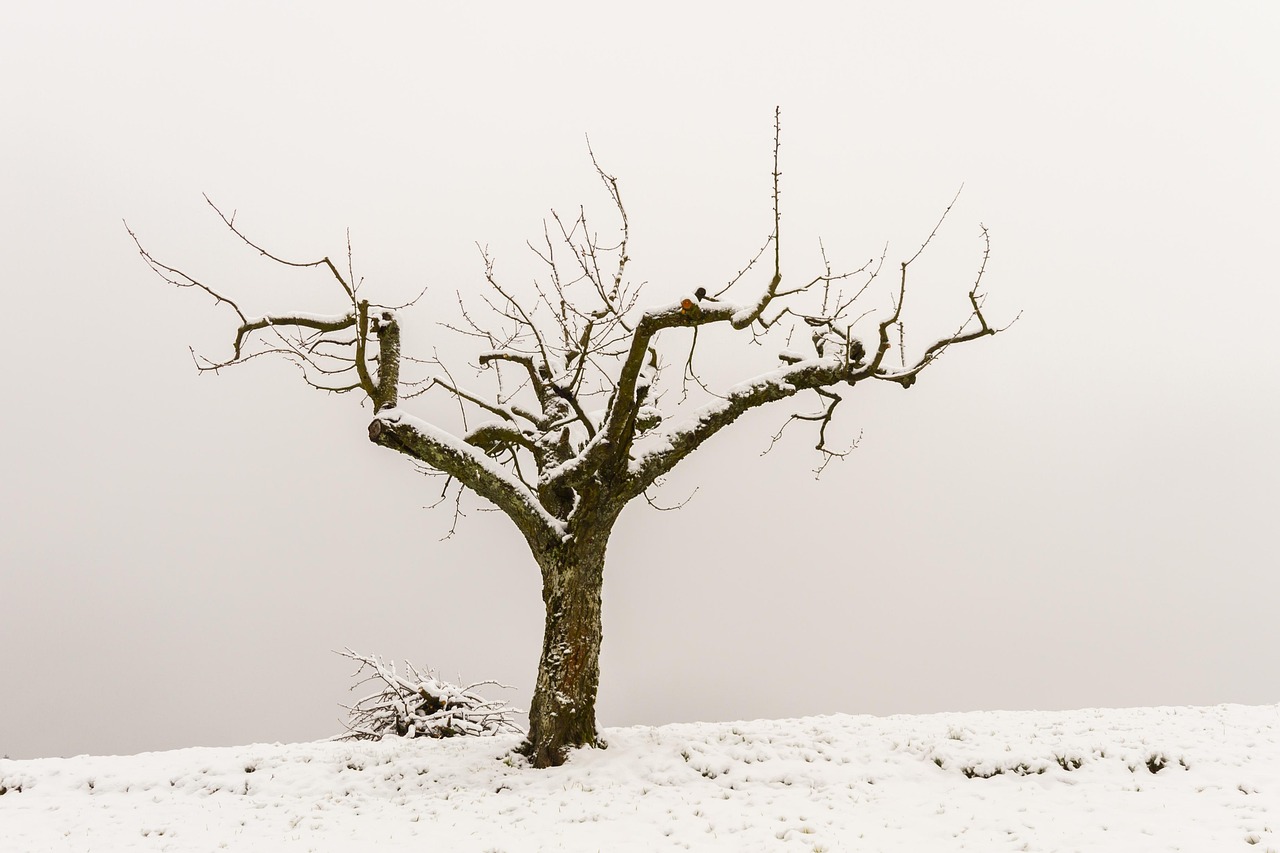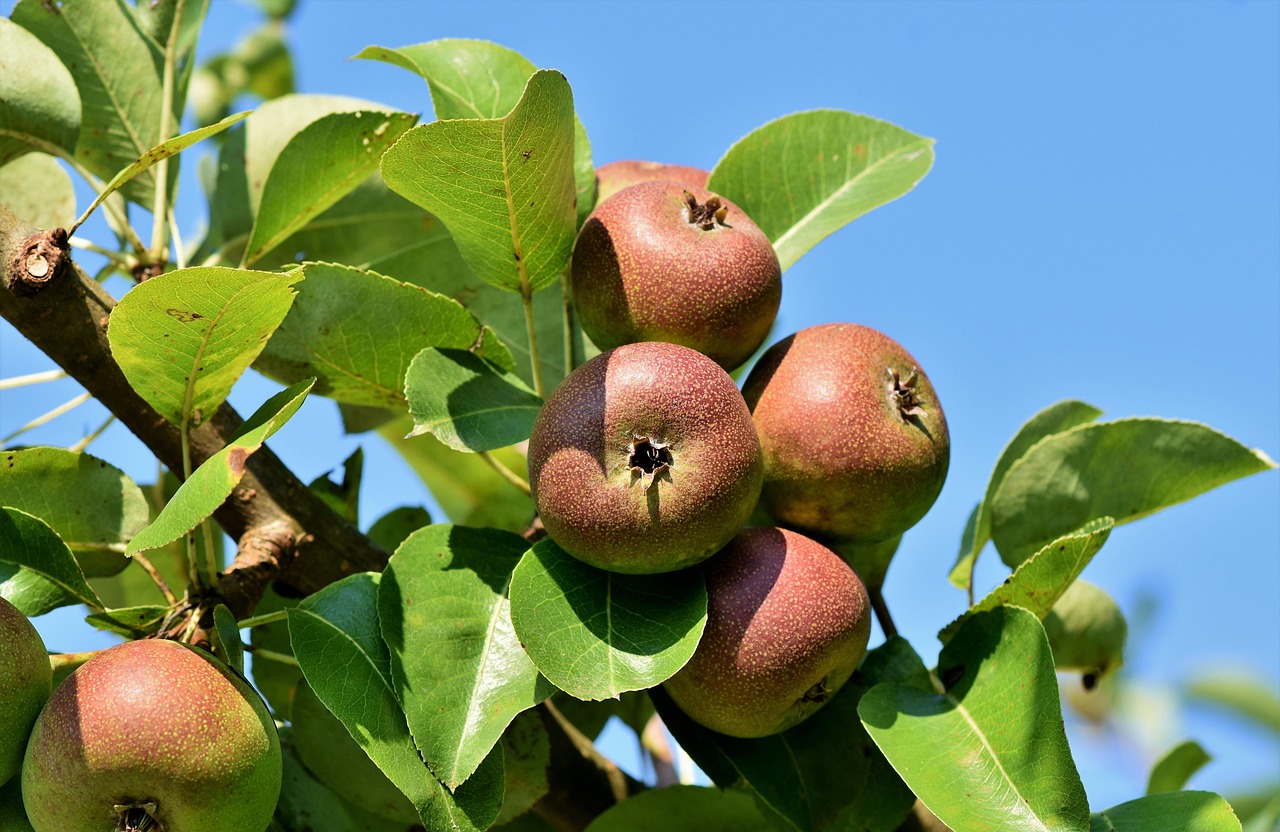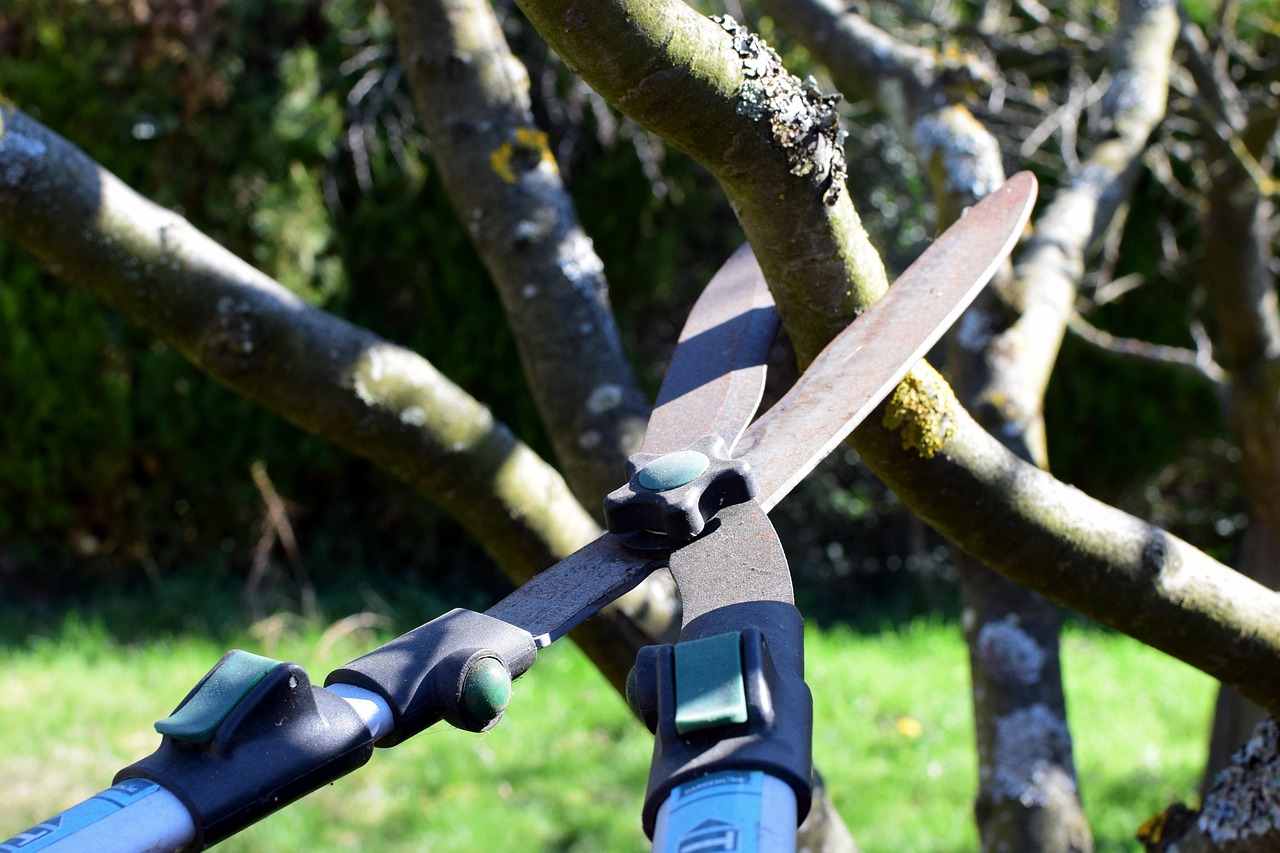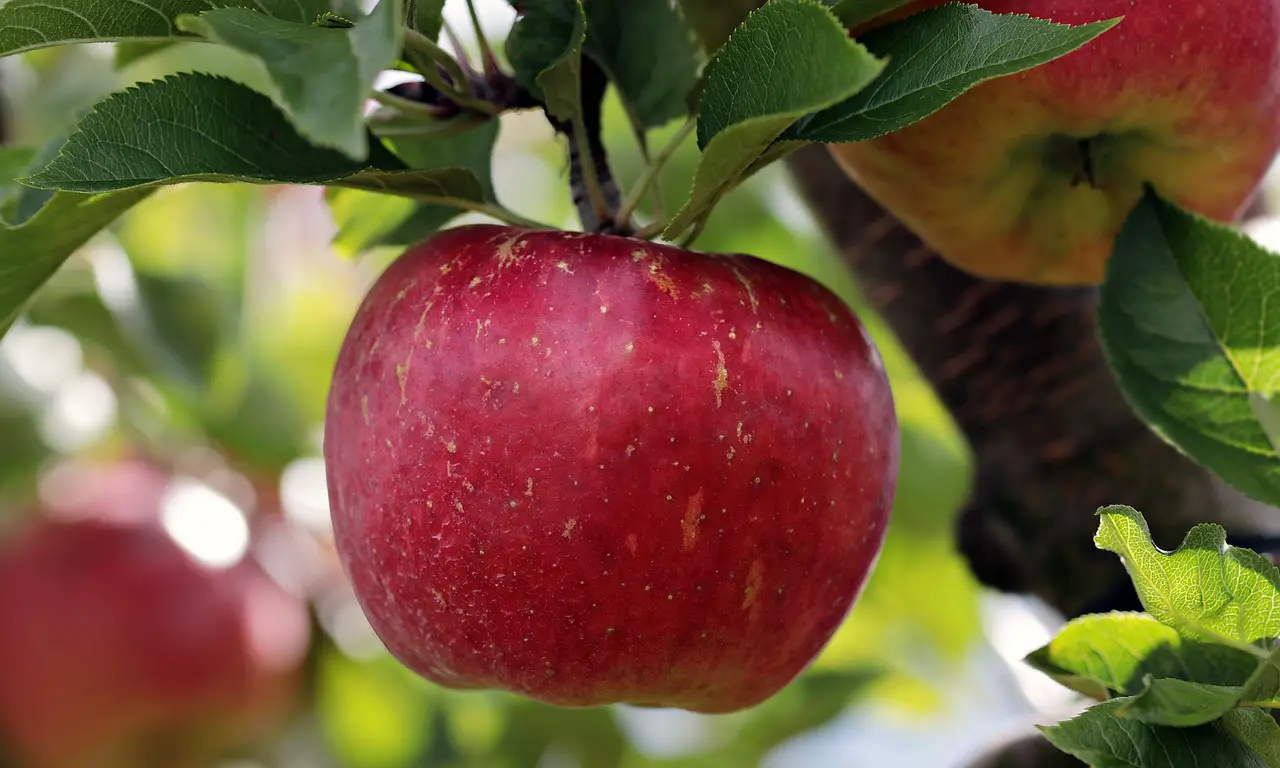Pruning young apple trees is essential for shaping their growth and enhancing fruit production. Begin by removing any dead or damaged branches and focus on creating a balanced structure. Proper cuts promote healthy growth and help prevent diseases.
Young apple trees require special care to ensure they develop into strong, productive plants. Pruning is one of the most important tasks for new apple tree owners. It not only shapes the tree but also encourages healthy growth and fruit production. Understanding the right techniques and timing for pruning is crucial for success.

When you prune young apple trees, you encourage stronger branches and a more open canopy. This allows sunlight to reach all parts of the tree and improves air circulation. Both of these factors are vital in preventing diseases and ensuring that the tree can produce healthy fruit.
Why Prune Young Apple Trees?
Pruning serves several purposes for young apple trees:
- Encourages Strong Structure: By removing weak or competing branches, you help the tree develop a solid framework.
- Improves Airflow: A well-pruned tree allows better air circulation, reducing the chance of fungal diseases.
- Enhances Sunlight Exposure: Pruning opens up the canopy, ensuring all parts of the tree receive adequate sunlight.
- Stimulates Growth: Proper cuts can promote new growth in desired areas, leading to a healthier tree overall.
Additionally, pruning can help reduce the number of fruiting buds in the early years. This allows the tree to focus on growing strong and healthy rather than concentrating energy on producing fruit too soon. It is important to remember that young trees need time to establish themselves before heavy fruit production begins.

Best Time to Prune Young Apple Trees
The timing of your pruning is crucial. Generally, the best time to prune apple trees is during late winter or early spring, just before new growth begins. This timing minimizes stress on the tree and reduces the risk of disease. However, it’s also important to avoid pruning in late summer or fall, as this can encourage new growth that may not harden off before winter.
| Season | Recommended Actions |
|---|---|
| Late Winter/Early Spring | Prune to shape the tree before new growth starts. |
| Summer | Minimal pruning; focus on removing dead or diseased branches. |
| Fall | Avoid major pruning; time for tree rest. |
Essential Pruning Techniques
When pruning young apple trees, several techniques can help you achieve the best results:
Cuts to Make
Make clean cuts using sharp pruning shears or loppers. Aim for an angle that allows water to run off, reducing the risk of rot. Here are some specific cuts to consider:

- Thinning Cuts: Remove entire branches at their point of origin to reduce crowding.
- Heading Cuts: Shorten branches by cutting them back to a healthy bud, promoting bushier growth.
- Removal of Suckers: Eliminate shoots that grow from the base, as they divert energy from the main branches.
Creating a Scaffold
A scaffold is a framework of main branches that supports the tree’s structure. Aim for 3 to 5 main scaffold branches evenly spaced around the trunk. This will allow for a balanced shape and encourage healthy growth patterns. When selecting scaffold branches, choose those that grow outward and upward rather than inward toward the center.
Avoiding Common Mistakes
While pruning young apple trees can be straightforward, several common mistakes should be avoided:
- Over-Pruning: Removing too many branches can stress the tree and hinder its growth.
- Poor Cuts: Making jagged or improper cuts can lead to disease or pests entering the tree.
- Ignoring Tree Health: Always assess the tree’s health before pruning; only cut what is necessary.
Being knowledgeable about these aspects will help you create a healthy environment for your young apple trees, setting them up for future success.

Understanding Tree Growth Stages
To effectively prune young apple trees, it is vital to understand their growth stages. Each stage requires different care and attention. Apple trees generally go through several key phases:
- Establishment Phase (0-2 Years): During this period, the tree focuses on developing roots and establishing a strong structure.
- Juvenile Phase (3-5 Years): The tree begins to grow more rapidly and produce its first fruits. Pruning is critical in shaping the tree during this time.
- Mature Phase (5+ Years): The tree reaches full growth and fruit production. Maintenance pruning becomes essential.
Understanding these stages allows you to tailor your pruning techniques and care for the specific needs of your apple tree, ensuring it thrives throughout its life.
Pruning Techniques for Each Growth Stage
Applying the right pruning techniques at each growth stage helps optimize the tree’s development. Here are some recommended techniques:
Establishment Phase Techniques
In the establishment phase, focus on creating a strong foundation. Key actions include:
- Initial Shaping: Remove any competing leaders to promote a single trunk. This encourages upward growth.
- Encouraging Branch Development: Select 3 to 5 scaffold branches that are well-placed and evenly distributed around the trunk.
- Removing Damaged Growth: Prune away any broken or damaged branches to help the tree conserve energy.
Juvenile Phase Techniques
During the juvenile phase, the tree will start producing its first fruits. Pruning should focus on:
- Thinning Out: Remove some of the smaller branches to improve air circulation and sunlight exposure.
- Heading Back: Shorten new growth to encourage bushier growth and more fruiting buds.
- Balancing Growth: Ensure that branch lengths are balanced to prevent one side from becoming too dominant.
Mature Phase Techniques
Once the tree reaches maturity, maintenance pruning becomes essential. Consider the following practices:
- Crown Thinning: Remove older branches to allow light penetration and air circulation within the canopy.
- Deadwooding: Regularly check for and remove dead or diseased wood to maintain tree health.
- Renewal Pruning: Cut back older branches that produce less fruit to stimulate new growth.
Tools You Will Need
Having the right tools is crucial for effective pruning. Here are some essential tools for young apple tree pruning:
| Tool | Description |
|---|---|
| Pruning Shears | Ideal for cutting smaller branches; choose bypass shears for clean cuts. |
| Loppers | Used for thicker branches; provides leverage for easier cutting. |
| Saw | A small hand saw is necessary for larger branches that cannot be cut with shears or loppers. |
| Rake or Tarp | Helps gather fallen leaves and cuttings after pruning. |
Using sharp, clean tools will help prevent damage to the tree and encourage healthy healing after cuts. Always disinfect your tools before pruning to minimize the risk of spreading disease.
The Role of Fertilization After Pruning
After pruning, fertilization can play an important role in encouraging healthy growth. Here are some tips on how to fertilize young apple trees post-pruning:
- Timing: Apply fertilizer in early spring before new growth begins.
- Type of Fertilizer: Use a balanced fertilizer with equal parts nitrogen, phosphorus, and potassium for optimal growth.
- Avoid Over-Fertilizing: Too much fertilizer can lead to excessive growth at the expense of fruit production.
This additional care after pruning will support your young apple trees as they recover and grow stronger, setting them up for a fruitful future.
Pest and Disease Management for Young Apple Trees
Maintaining the health of young apple trees involves more than just pruning and fertilization. Proper pest and disease management is crucial for ensuring the trees thrive. Understanding common pests and diseases will help you protect your investment.
Common Pests Affecting Young Apple Trees
Several pests can harm young apple trees. Here are some of the most common:
- Apple Maggot: This fly lays eggs in the fruit, causing it to rot.
- Codling Moth: Larvae tunnel into apples, leading to significant damage.
- Spider Mites: These tiny pests feed on leaves, causing discoloration and leaf drop.
- Aphids: These small insects suck sap from leaves, leading to stunted growth.
Signs of Pest Infestation
Being aware of the signs of pest infestation can help you take action before serious damage occurs. Look for:
- Discoloration or Wilting Leaves: This may indicate aphid activity or spider mite infestations.
- Holes in Leaves or Fruit: Look for signs of codling moth or apple maggot damage.
- Sticky Residue: A sign of aphids, which leave honeydew on leaves.
Preventative Measures
Preventing pest infestations is often easier than dealing with them after they occur. Here are some effective strategies:
- Regular Inspections: Check your trees frequently for any signs of pests or disease.
- Cultural Practices: Ensure proper spacing between trees to improve air circulation and reduce moisture.
- Companion Planting: Plant beneficial plants that repel pests, like marigolds or nasturtiums, near your apple trees.
Disease Management for Young Apple Trees
Alongside pests, diseases can also threaten young apple trees. Here are some common diseases and how to manage them:
Common Diseases
- Apple Scab: This fungal disease causes dark spots on leaves and can lead to early leaf drop.
- Powdery Mildew: A white powdery coating on leaves, which can stunt growth and fruit production.
- Cedar Apple Rust: Requires both apple and cedar trees to complete its life cycle, causing orange spots on leaves.
Signs of Disease
Identifying diseases early can help you manage them more effectively. Watch for:
- Leaf Spots: Look for dark or discolored spots on leaves, which may indicate apple scab.
- Powdery Coating: A white or grayish powder on leaves is a sign of powdery mildew.
- Deformed Fruit: Misshapen or rust-colored fruit can indicate cedar apple rust.
Treatment Options
If your young apple trees show signs of disease, consider these treatment options:
- Cultural Practices: Remove fallen leaves and debris to reduce the spread of diseases.
- Chemical Treatments: Fungicides may be necessary for severe cases; always follow label instructions.
- Resistant Varieties: Consider planting disease-resistant apple tree varieties to reduce risk in the future.
The Importance of Watering Practices
Watering is another critical factor in maintaining the health of young apple trees. Proper watering practices can help prevent stress and promote healthy growth.
Watering Frequency
The frequency of watering depends on various factors such as soil type, weather conditions, and tree age. Here are some guidelines:
- Newly Planted Trees: Water deeply once a week during dry periods, ensuring the soil remains moist but not waterlogged.
- Elder Trees (1-3 Years): Gradually reduce watering frequency as the tree establishes its root system; monitor soil moisture regularly.
- Mature Trees (3+ Years): These trees typically require less frequent watering unless faced with prolonged dry spells.
How to Water Effectively
The method of watering can influence how well the tree absorbs moisture. Here are some effective techniques:
- Deep Watering: Apply water slowly over a longer period to allow it to penetrate deep into the root zone.
- Avoid Surface Watering: This practice can lead to shallow root systems and increased vulnerability to drought.
- Aeration: Consider using a soaker hose or drip irrigation to deliver water directly to the roots without wetting foliage.
By implementing these watering practices, you will give your young apple trees the best chance to establish themselves and thrive. Proper care at this stage will set the foundation for healthy growth and abundant fruit production in the years to come.
Additional Tips for Successful Young Apple Tree Care
In addition to pruning, pest and disease management, and proper watering practices, there are other aspects to consider when caring for young apple trees. These additional tips can further enhance the health and productivity of your trees.
Soil Health
Healthy soil is the foundation for strong trees. Ensuring your soil has the right nutrients and structure will promote better growth. Here are some soil health tips:
- Soil Testing: Conduct a soil test to determine pH and nutrient levels. Apple trees prefer slightly acidic soil (pH 6.0 to 7.0).
- Organic Matter: Incorporate organic matter such as compost or well-rotted manure to improve soil structure and fertility.
- Mulching: Apply a layer of organic mulch around the base of the tree to retain moisture, suppress weeds, and improve soil quality as it breaks down.
Sunlight Exposure
Apple trees thrive in full sunlight. Ensure your young trees receive at least 6-8 hours of direct sunlight each day. Here are some strategies to maximize sunlight exposure:
- Choose the Right Location: Plant apple trees in open areas away from tall structures or trees that may block sunlight.
- Thin Surrounding Vegetation: If other plants or trees are nearby, consider selectively thinning them to allow more light to reach your apple trees.
- Monitor Growth: Regularly check the growth of your trees. If you notice they are leaning towards the light, it may be time to prune neighboring plants or relocate your apple trees.
Fostering Pollination
Pollination is crucial for fruit production. To enhance pollination rates for your young apple trees, consider these tips:
- Plant Companion Trees: Plant different apple varieties nearby to ensure cross-pollination. Many apple trees are not self-pollinating, so having multiple varieties can significantly increase fruit set.
- Attract Pollinators: Create a pollinator-friendly garden by planting flowers that attract bees and other pollinators.
- Avoid Pesticides During Bloom: Limiting pesticide use during flowering will help protect beneficial insects that assist in pollination.
Final Thoughts
Caring for young apple trees requires a combination of knowledge, patience, and dedication. By implementing proper pruning techniques, managing pests and diseases effectively, ensuring adequate watering, and paying attention to soil health, sunlight exposure, and pollination needs, you can create an environment where your apple trees can flourish.
The journey from planting a young apple tree to enjoying its fruits is rewarding. It is essential to remember that each tree is unique and may require adjustments in care based on its specific needs and environmental conditions. Regular monitoring and adapting your care practices will go a long way in ensuring the health and productivity of your apple trees.
As you nurture your young apple trees, you not only cultivate a fruitful harvest but also contribute to the beauty of your landscape and the sustainability of your gardening practices. With time and care, your efforts will yield delicious apples that you can enjoy with family and friends for years to come.
